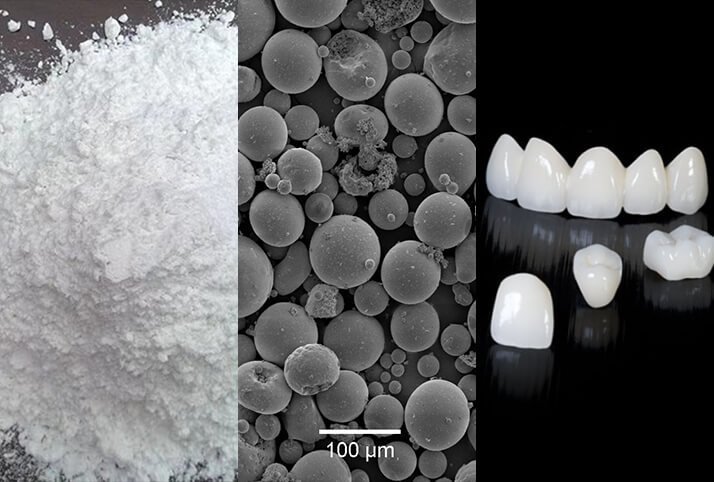
Applications of
Zirconia Powders
Zirconia is used in a wide range of applications and markets, with specific applications including solid fuel cells, automotive exhaust treatment, dental materials, ceramic cutting tools and zirconia ceramic fibre optic inserts. With the development of zirconia ceramics, there has been a major shift in their application areas. Whereas in the past they were mainly used in refractory materials, they have now been transformed into structural ceramics, bioceramics and electronic functional ceramics, and are increasingly being used in high-technology fields such as aerospace, aviation and nuclear industries.
1. Refractory materials
Zirconium oxide is chemically stable and has good thermal stability and thermal shock resistance, so it can be used as a heat-resistant ceramic coating and high-temperature refractory products. It can also be added to other refractory materials to improve refractoriness. Refractory materials made from zirconia include: zirconia sizing spouts, zirconia crucibles, zirconia refractory fibres, zirconia corundum bricks and zirconia hollow ball refractories, which are used in metallurgical and silicate industries.
2.Structural ceramics
Zirconia ceramics have good mechanical properties and are widely used as engineering structural materials. Zirconia ceramic bearings have higher life stability than traditional sliding and rolling bearings, more wear-resistant and corrosion-resistant; zirconia ceramics can be made into engine cylinder liners, piston rings and other parts, which can improve thermal efficiency while reducing mass; zirconia ceramic valves can effectively replace traditional metal alloy valves, especially in harsh working environments, effectively reducing wear and improving corrosion resistance, thus greatly improving life; zirconia ceramics can be used to make ceramic knives, which are sharper than traditional steel knives and have a beautiful appearance, etc.
3.Functional ceramics
Zirconium oxide is electrically conductive at high temperatures, especially after the addition of stabilisers. In addition, piezoelectric materials formed from the main components of zirconia have been widely used. Oxygen sensors made from zirconia are highly sensitive and have been used in large numbers to detect the oxygen content of molten steel, to detect the ratio of oxygen to gas in engines and to detect the oxygen content of industrial exhaust gases. Zirconia ceramic materials can also be made into temperature, sound, pressure and acceleration sensors and other intelligent automated detection systems.
4.Medical biomaterials
The most common applications of zirconia ceramic materials in the biomedical field are as dental restorative materials and surgical tools; in countries such as Japan and the USA, zirconia materials are used to produce porcelain teeth with good transparency, biocompatibility and quality; and some researchers have already succeeded in using zirconia materials to make artificial bones for medical purposes.
